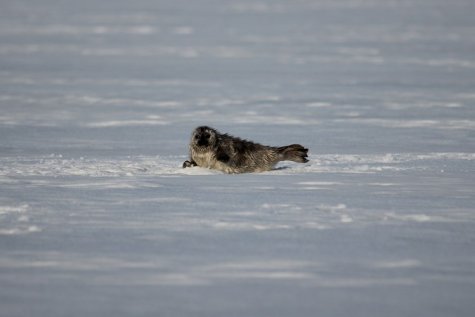New Cameras
A week on the ice – a brief childhood
Ringed seal Viigerhüljes ehk viiger Pusa hispida
Grey seal Hallhüljes Halichoerus grypus
The suckling period of ringed seals is relatively short – about a month and a half in total. This is actually even quite a lot for ice seals: hooded seals manage only with four days during which the pup receives almost eight kilograms of fat daily from mother`s milk. Ringed seals are not able to have such a quick diner when they are young, the milk production of their mothers is limited to 1,5 litres of 30-40 percent milk (yes, milk!) and the weight gain of the pups is only about three or four hundred grams per day. This quantity is enough as the ringed seals usually live on a stationary ice mass where the adults are able to find food of their own, next to nursing the pup.
Many other seals who give birth on drift ice do not have the chance to dive when they have pups because by the time they are able to obtain a significant meal the ice floe may have already drifted behind the horizon - in that case the „snack“ would come with a very steep price! Hooded seals, who hold the suckling record, but also the grey seals who give birth on land do not dare to go into water when they have pups and the mother gives the pup everything it can. However, they will not risk starvation and therefore the parting from the seal pup is abrupt, without any special ceremonies.
As a result of the suckling marathon the mothers lose most of their body weight (even ten kilograms per day!) and at the end of the nursing period they look like bicycles stuffed into a potato sack; their bodies reach record weight of little over 100 kilograms right before the pup is born and they lose about a third of it in the early spring and the cask-shaped body does not develop much of a waist.








